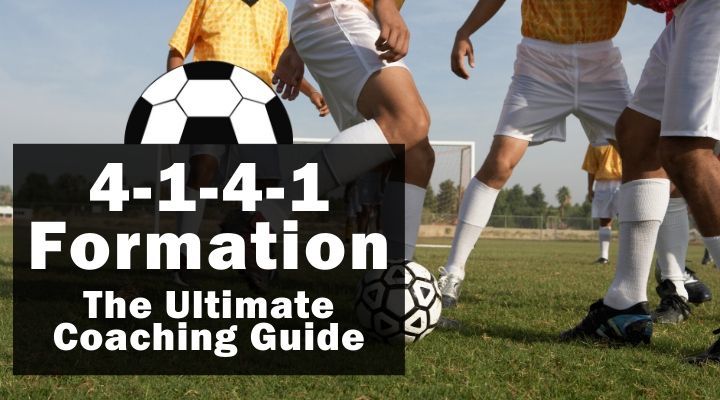4-1-4-1 Formation – The Ultimate Coaching Guide
In the past, the 4-1-4-1 formation used to be seen as a defensive shape for risk-averse coaches.
However, managers such as Pep Guardiola have transformed into one of the most exciting, attacking, and fluid formations out there.
This is in large part because the holding midfielder shields and protects your defense, giving the rest of the midfielders more freedom to attack.
As such, it can easily transform into a fluid 4-3-3 or 4-2-3-1 when you’re attacking or even a 3-4-3 if the holding midfielder drops between the centrebacks and the two fullbacks push forward.
The formation should, in theory, be defensively sound thanks to the flat-back four and defensive-minded midfielder in front of them.
A 4-1-4-1 affords you a great deal of tactical flexibility and fluidity in terms of the specific roles of each player, which is crucial in the modern game.
To give you a better idea of whether the 4-1-4-1 is the right fit for your team, let's take a look at it in more detail, exploring its strengths, weaknesses, and inner workings.
What is a 4-1-4-1 Formation?
The 4-1-4-1 formation is essentially an adaptation of a 4-5-1.
The core difference is that one of the center midfield trio drops into a dedicated defensive role.
You can choose to deploy this defensive midfielder (CDM) as an all-out ball-winner or as more of a sweeping playmaker.
In reality, this decision depends on the player profiles of the other two midfielders.
If they’re all-rounders or box-to-box style players, a deep-lying playmaker is a great option for the defensive role.
However, if they’re creative, attack-minded midfielders, you’ll need additional security behind them.
The midfield four, consists of two central and two wide players, appearing on paper like the midfield of a 4-4-2.
But, with a defensive anchor backing them up, they can afford to play in more advanced positions and occupy different areas of the field.
Positioning and spacing are key in a 4-1-4-1 to prevent the lone striker from becoming isolated.
Although they can’t abandon their defensive duties entirely, the four midfielders must support the center forward with direct passes, intricate link-up play, crosses, and goalbound runs.
So, while the 4-1-4-1 might look rather defensive, the offensive intent of the midfield can change that perspective drastically.
Having said that, it can still certainly help you to protect a lead, shut up shop, and make your team compact and hard to beat.
As a coach, you’ll find that individual player roles are quite flexible so you can set the team up to suit a specific strategy.
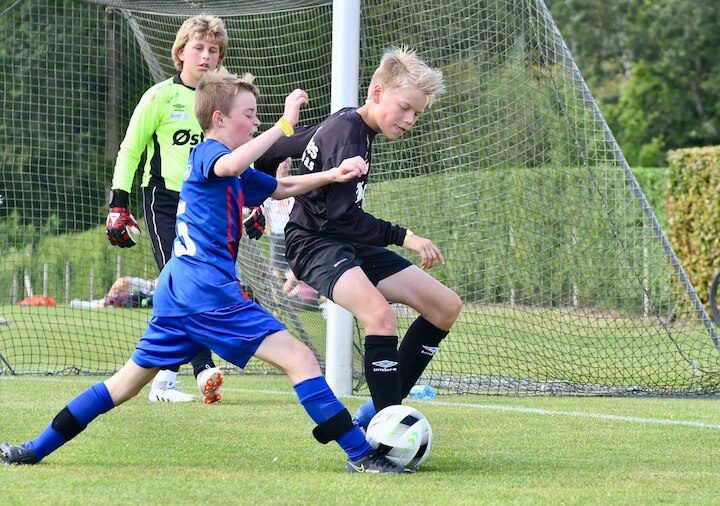
4-1-4-1 Formation Strengths
#1. Defensively Sound
With a flat-back four protected by a specialized holding midfielder, the 4-1-4-1 can be very hard to score against.
This CDM plays between the defensive and midfield lines, occupying the areas typically taken up by crafty number 10s or center attacking midfielders (CAMs).
Their sheer presence can be enough to delay passes into dangerous areas and they’re generally in a position to clean up loose passes and second balls.
Additionally, the four midfielders in front of the CDM are by no means dedicated attackers.
Off the ball, they can sink deep to screen the backline, creating dense defensive blockades.
#2. Tactical Flexibility
One of the key strengths of the 4-1-4-1 is its tactical flexibility.
It can easily adjust to a range of great formations, like a 4-4-2, 4-3-3, or 4-1-3-2.
This gives your team a serious dynamic, enabling you to switch strategies mid-game.
The 4-1-4-1 is also flexible in terms of how you set it up.
For example, the midfield roles are highly interchangeable.
Depending on the game-day strategy or your opponents, you can choose certain player profiles for the midfield slots.
#3. Allows For Two Attacking Midfielders
While many think the 4-1-4-1 is a defensive formation, the reality is that it can be extremely attacking.
And although it’s not a necessity, the shape allows you to set out with two attacking midfielders or number 10s.
These players can have relative positional freedom to find gaps from which they can create chances.
Playing off the lone striker, opposing center backs will have to contend with three players operating directly through the middle.
#4. Multiple Points of Attack
The 4-1-4-1 formation is very well-balanced.
Even though there are enough numbers to fight and win the midfield battle, the position doesn't sacrifice width.
When central areas get congested, you can focus on the wings, using your fullbacks and wingers to create from the flanks.
You can also use the CDM to orchestrate attacks from your own half.
A skilled deep-lying playmaker can rely on their range of passing to make line-breaking through balls and switches of play.
With the right player in this role, your team will dominate possession and dictate the tempo of the game for 90 minutes.
#5. Enables You to Win the Midfield Battle
As the age-old saying goes, games are often won and lost in midfield.
In the era of possession-based soccer and attacking systems, this is especially true.
With three center midfield players, the 4-1-4-1 formation has sufficient numbers to contend against most other shapes.
Furthermore, the dedicated defensive midfielder gives your team a physical edge, especially when you’re out of possession.
4-1-4-1 Formation Weaknesses
#1. Lone Striker
Naturally, having just one striker has its disadvantages.
While this has become the norm over the past decade, many formations operate with a front three so there are attack-minded wingers on either side of the forward.
In a 4-1-4-1 formation, the midfielders are the key link to the striker and it’s up to them to ensure they get good supply.
If they fail to do so, the striker can get isolated, limiting your team’s chances of scoring goals.
#2. Requires a Specialist CDM
The importance of the CDM in the 4-1-4-1 can’t be understated.
They’re integral to the functionality of the team in defense and offense.
From a defensive standpoint, they screen the backline and occupy key spaces between the lines, snuffing out attacks before they happen.
In attack, their positioning and work provide freedom to the creative players, allowing them to play with intent and fluidity.
Without a specialist CDM, this formation loses its defensive solidity and its creative freedom.
#3. Reliant on a Strong Midfield
As you can tell by now, the midfield is everything in a 4-1-4-1.
Unfortunately, if you’re players aren’t up to scratch, it’s not the formation for you.
Your midfielders should not only be hard workers, but they must also have high soccer IQs, great positional sense, and excellent technical skills.
If you lack specialist midfielders or creative players to fill these slots, there are plenty of other more effective formations.
#4. Can Be Difficult to Create Chances
Due to the demands of this shape, it’s not always easy to create chances.
If your opponents disrupt the flow of play through the middle, you may struggle to get the ball to your striker.
Although I mentioned the smooth fluidity of this formation and the various points of attack, it’s heavily reliant on the midfield.
So, if you have some injuries or your midfielders are having an off day, goal-scoring can be an issue.
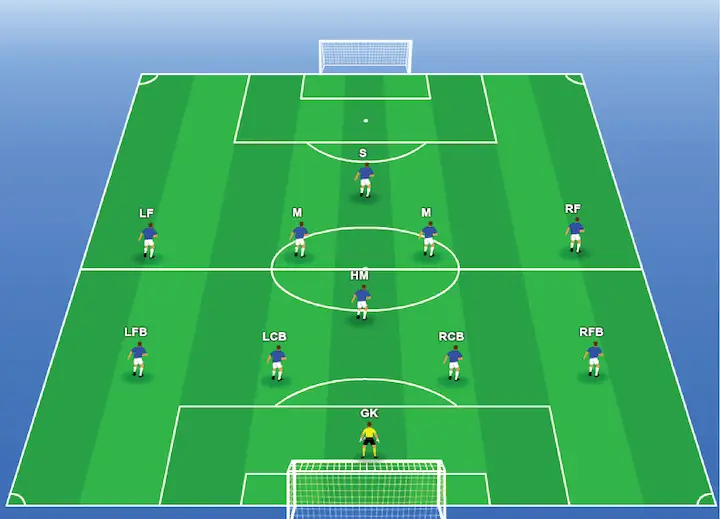
How to Play the 4-1-4-1 Formation
If, like me, you’re intrigued by the 4-1-4-1 formation, the next step is to learn what makes it tick.
With a selection of midfield talent at your disposal, I’ve no doubt your team can be successful in this setup.
So let’s take a closer look.
4-1-4-1 Formation Setup
On paper, the 4-1-4-1 formation is easy to understand and digest.
The core player groups include:
- Flat back four of two center backs and two fullbacks
- One defensive midfielder or deep-lying playmaker
- Four player midfield of two wingers and two central midfielders
- One striker
However, as alluded to, a fully functional midfield is key in this shape.
So here are some tips for playing in a 4-1-4-1.
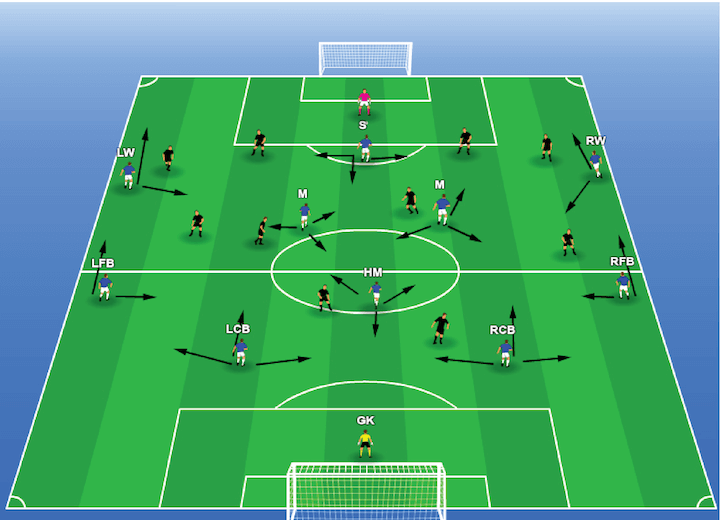
Attacking in the 4-1-4-1 Formation
In full flow, attacking in the 4-1-4-1 is a sight to behold.
There are passing triangles in midfield as well as options out wide, allowing you to progress the ball quickly and switch the point of attack.
But, there are certain things you need to get right to ensure attacking fluidity.
Below, I outline three key focus areas to make sure your team is on song in the 4-1-4-1.
1. Midfield Spacing
As discussed in the weaknesses section above, midfield congestion can be an issue in this shape.
So, it’s important to get the spacing right.
The key to spacing among your center midfield trio is to give each individual specific roles and responsibilities.
Usually, the CDM sits at the base of the midfield and drifts back and forth across the field to keep up with the play.
This means they’re in position to jump on a loose ball and to receive a pass if an attack breaks down in the opponent’s half.
The other two midfielders typically occupy more advanced positions to the right and left of the CDM.
If they’re given box-to-box roles, they should remain relatively narrow to help out with off-the-ball work in midfield.
However, if they’re deployed as CAMs, they should have a little more freedom to roam.
That said, the midfield three should move as a unit, ensuring there are passing angles and cover available at all times.
2. Utilize the Single Pivot
The CDM, often referred to as the single pivot (because they switch between defense and attack frequently) is an important player in buildup play.
This is particularly true if they’re a deep-lying playmaker as they’ll be relied on to control the flow of the game and ignite attacking moves.
However, even if your CDM is more of a ball-winning type, they have a role to play in offense.
The CDM is essentially an attacking restart button.
When a move fails down the right flank, the CDM should be available to receive a relief pass and get the next phase started.
This can be done with strategic movement and simple passing; there’s no need for anything flashy in such scenarios.
Nonetheless, the single pivot should get a lot of touches throughout a game.
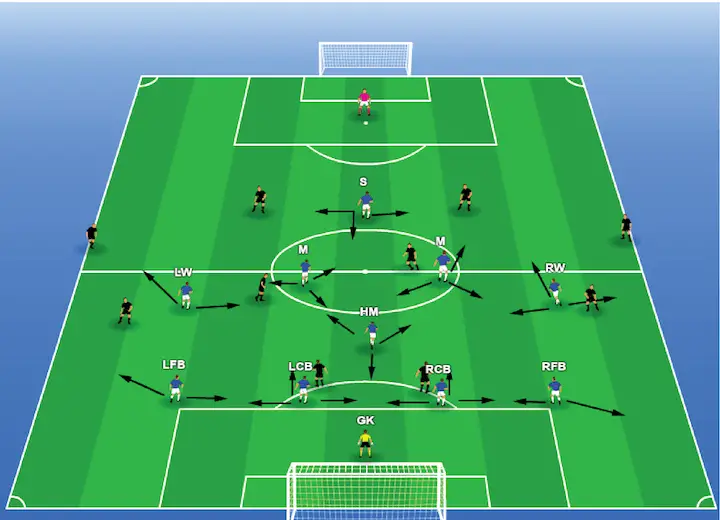
Defending in the 4-1-4-1 Formation
The 4-1-4-1 formation really suits a team that enjoys possession-based soccer.
With a flat-back four that’s protected by a CDM, the more advanced players can express themselves in the knowledge that they have adequate cover behind them.
As a coach, you’ll enjoy the defensive solidity that the shape offers.
Here are some important factors to consider when setting out your defensive strategy.
1. Cut the Supply Lines
There’s nothing more frustrating on a soccer field than having your most creative players snuffed out of the game.
With a broad midfield block and a CDM behind them, the 4-1-4-1 is a perfect shape to block off supply lines to the opposition striker and number 10.
For the most part, this is the responsibility of the holding midfielder.
Playing in the defensive half-space (between the backline and midfield), they can read the game and fill the positions that the opponents are looking to exploit.
Furthermore, the extra support means that center backs can hold a higher line and engage the strikers as soon as they touch the ball.
2. Mid Block
Use the numerical advantage in midfield by establishing a mid-block when your opponents are in possession.
This means creating a compact defensive line with your midfielders in the middle third of the field.
Rather than sitting back and inviting pressure toward your penalty area, a mid-block allows you to win back possession in the business area of the field.
From here, you can spring rapid counterattacks or attack in bunches with the opposing team on the back foot.
Hold the Shape
The 4-1-4-1 formation is structurally sound from a defensive standpoint.
Unless players get caught out of position or the midfield spacing is off, it’s a difficult shape to penetrate.
Therefore, when your opponents have the ball, it’s important to hold the shape.
While your midfielders can get a little closer together, the general structure of the team should be maintained.
Individual Position Responsibilities
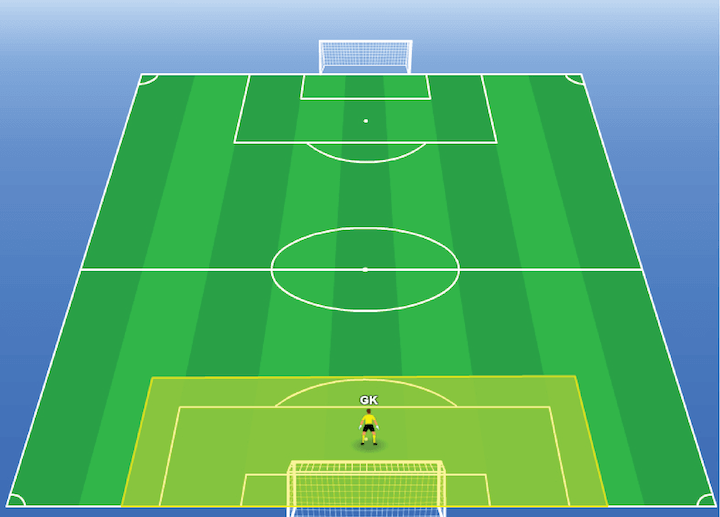
Goalkeeper
Most modern teams play out from the back, making a ball-playing goalkeeper extremely important.
Since the 4-1-4-1 is a formation used by possession-based teams, having a goalie that’s good with the ball at their feet is a significant advantage.
The goalkeeper essentially becomes an extra outfield player in buildup scenarios which is paramount against a tough high press.
Aside from good technical skills, the goalie should have excellent communication and leadership from the back, ensuring the defenders are always in the right positions.
Obviously, they should have a commanding presence in the box and possess fast reflexes and safe hands.
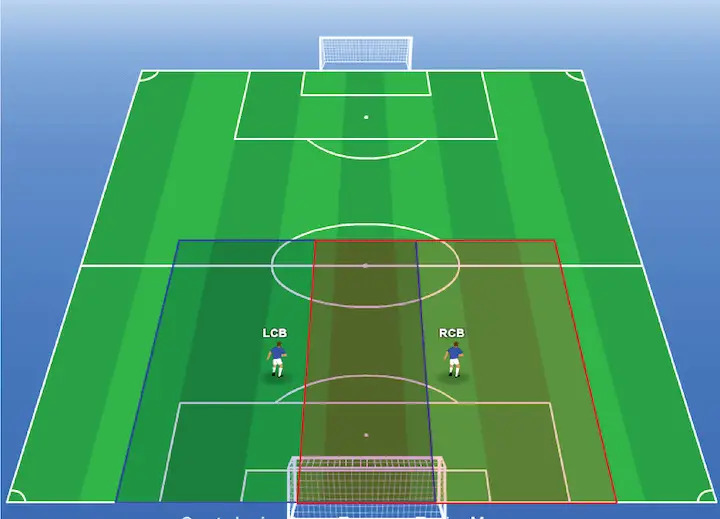
Center Backs
The center backs in a 4-1-4-1 play in the same way as they would in any traditional back four.
They defend first, stay tight, and defend their penalty box ruthlessly.
With added protection from the CDM, the center back pairing can easily become a back three when defending a lead.
This allows the defenders to be more committed in challenges and provides extra cover for the fullbacks.
Since the 4-1-4-1 formation is defensively solid, one of the biggest focuses on the center backs should be to limit unforced errors.
This comes from constant communication with the other defenders and the CDM.
Clear communication keeps everyone alert even when your team is dominating games.
In a possession-based team, the center backs should also be good on the ball.
While they don’t need to do anything elaborate in possession, a good passing range can really change the dynamic of the team, making it dangerous from all angles.
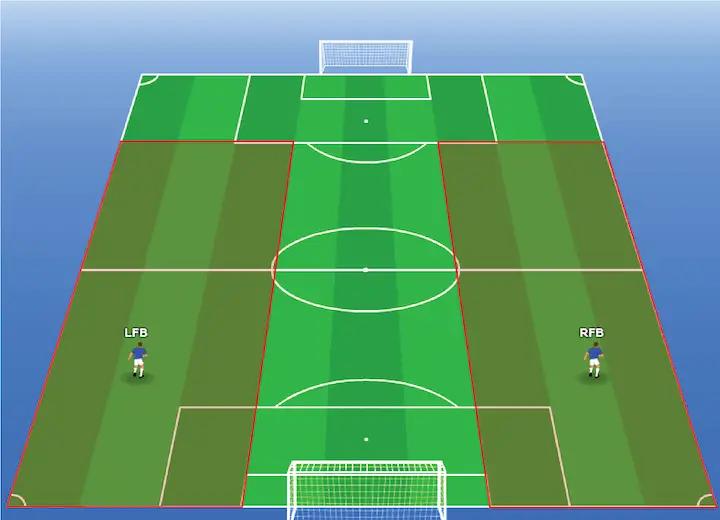
Fullbacks
While the primary aim of the fullbacks in the 4-1-4-1 formation is to defend, they should be able to contribute to attacking scenarios.
In essence, however, their role is to defend the flank, keep the opposition winger in check and prevent them from making dangerous crosses.
When the ball is on the opposite side, the back post is the fullback's responsibility.
While the fullbacks should be able to win their personal battle with the player they’re up against, they also need to closely coordinate with the center backs, CDM, and wingers.
This demands good communication and teamwork as well as great positioning and tactical understanding.
When in possession, the two fullbacks should push wide and create passing angles for teammates.
In attack, their key partner is the same-sided winger.
Ideally, the fullbacks and wingers will have excellent partnerships and attack as a unit through overlaps, underlaps, dummy runs, and quick passing.
Defensive Midfielder
The flexibility, fluidity, and defensive solidity of a 4-1-4-1 stems from the CDM.
It’s their job to sit in between the defense and midfield and snuff out any of the opposition's attacks, through marking, interceptions, and blocks.
This means they have to have a very good sense of positioning and be quick and strong in the tackle.
They should also be able to sniff out danger and drop into any gaps that open up when the opposition attack.
A high soccer IQ and good reading of the game are essential in this role.
Mobility, physicality, and stamina are also key traits of a dominant CDM.
Their role isn't only defensive however as they also need to be very comfortable on the ball and have a wide range of passing.
Usually, the CDM picks the ball up off of the defenders and sprays it forward to either the midfielders or fullbacks.
This is why many coaches favor a deep-lying playmaker for this role, especially since they have the time and space to directly impact the game.
However, these players are few and far between so a solid technical level combined with smart positional play is often enough for a strong CDM.
With many teams who play the 4-1-4-1, the holding midfielder acts as the manager's general out on the pitch.
They dictate the pace of play and set the tone for their teammates.
Consequently, these players often have great leadership skills and a fantastic tactical understanding of the team’s strategy.
Center Midfielders
The roles of the center midfielders are largely down to the manager’s philosophy.
Defensive-oriented coaches will opt for energy in the middle of the park, going with box-to-box players who can do a little bit of everything.
Attack-minded managers may choose two CAMs to fill these roles, giving the team more of a potent offense.
However, this decision often comes down to the abilities of the CDM and whether they can influence the team in and out of possession.
Regardless of what type of players the manager selects, the two central midfielders need to be cool, calm, and collected in possession, have good ball control, and be able to pick a pass.
As the center of the pitch will undoubtedly be quite congested, they need to work well in tight spaces and have some fancy footwork to get out of trouble when necessary.
They should be able to work well as both a central midfield partnership and as part of a trio with the holding midfielder behind them.
This means that they need a good sense of positioning and excellent communication.
The relationship between the three midfielders goes a long way to determining whether or not the team wins or loses and so they need to understand each other's roles perfectly.
Together they should be able to dominate possession and dictate the flow of the game.
Although the CDM is largely responsible for their collective defensive duties, they should work hard, support the defense, and cover a lot of ground.
While the two central midfielders certainly have to help out in defense, it’s absolutely crucial that they don’t drop too deep and leave the lone striker isolated.
As such, they need to be up and down the pitch regularly.
Ideally, one, if not both of them, should get close to the striker and look to run beyond them to get into goal-scoring positions of their own.
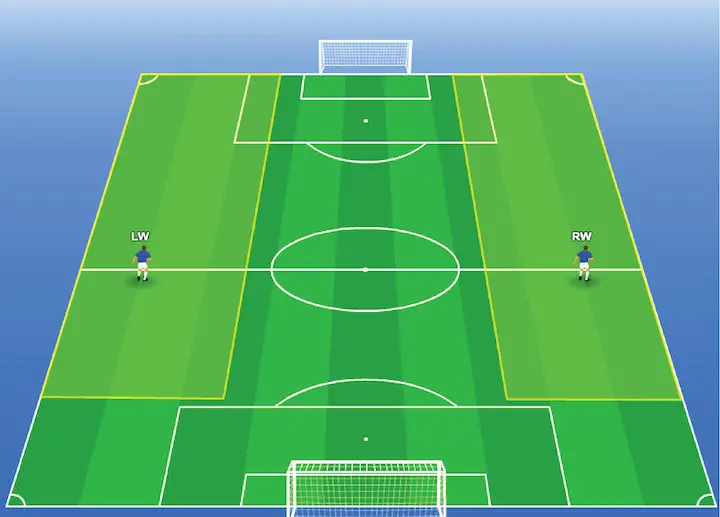
Wingers
The role of a winger in a 4-1-4-1 formation is straightforward but by no means easy.
Although they’re expected to track back and help out in defense, their true impact lies in the opposition’s half of the field.
Wingers are key contributors to goals and assists in this shape.
They should have enough skill and quickness to beat their marker 1v1 and possess the necessary technical abilities to execute in the final third.
Crosses from wide areas are part and parcel of a winger’s game as they look to pick out the striker at every opportunity.
However, in today’s game coaches favor inverted wingers.
Playing on the opposite side to their dominant foot, inverted wingers not only influence the game from the flanks, but they can also cut inside and join central attacks.
Inverted wingers are extremely dynamic.
Once they come to the inside they can shoot, make inswinging crosses, or play quick one-twos to get in behind the backline.
Having a good attacking relationship with their fullback makes this job a lot easier.
Fullbacks draw extra defenders into wide areas, stretching the defense, and opening gaps for the forwards.
Unlike the wingers of old, modern wide players should have the ability to contribute significantly to their team’s goal tallies by the end of the season.
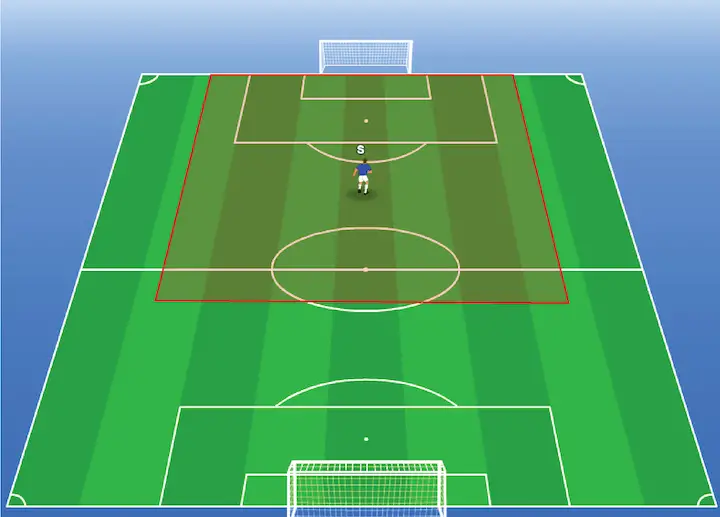
Striker
As you would expect, one of the main requirements for any striker in any team is to put the ball in the back of the net as frequently as possible.
This becomes even more important in a single-striker system such as the 4-1-4-1.
Beyond having fantastic finishing abilities, great off-the-ball movement, and an eye for goal, the striker also has to lead the line, battle for every ball, and make darting runs in behind the opposition's defense.
This helps to stretch the opponents and create more space for the creative midfielders.
The main issue for a striker in this formation is getting isolated.
Therefore, they need to be able to hold the ball up and wait for support from their teammates.
Your striker should be a great finisher first and a good facilitator second, demonstrating abilities to create chances and bring others into the game.
When the ball comes into the box from out wide, the striker needs to anticipate where it's going to get their head, foot, knee, or any other legal part of the body on the end of it.

How to Beat a 4-1-4-1 Formation
As demonstrated by some of Pep Guardiola’s most dominant teams, the 4-1-4-1 can be difficult to beat when it’s in full flow.
But, no formation is impenetrable and the 4-1-4-1 has its own share of weaknesses.
If you’re preparing your squad for a matchup against this formation, here are some tactics to consider.
1. Double Up On the CDM
The CDM is one of the most impactful positions in a 4-1-4-1, especially in defense.
A simple way to limit their influence is to play with two number 10s or CAMs.
Even the best players in the world can’t be in two places at once so a dual partnership can run this player ragged.
In defense, one of these midfielders can mark the CDM to restrict their impact going forward.
2. Movement and Fluidity in Attack
The rigid structure of the 4-1-4-1 is one of the main reasons it’s so difficult to break down.
A good way to disrupt the structure is for your attackers to move a lot and interchange positions.
So, instruct your striker and number 10 to swap roles occasionally and switch your wingers to the opposite sides throughout the game.
This prevents the opposition from getting settled and should eventually create openings.
3. Go Player-for-Player in Midfield
Although the 4-1-4-1 formation can hurt you from several positions, the midfield is the area with the most influence.
So, in order to mitigate their impact, consider going like-for-like in midfield and “man-marking” each player.
This is somewhat of a risky move because it relies on winning individual battles.
However, it puts enormous pressure on the opposition midfielders which can lead to mistakes.
Conclusion
As you can now see, the 4-1-4-1 formation is a fantastic shape whether you want your team to attack or defend.
Ultimately, the tactical approach is down to you, the coach as well as the players at your disposal.
Although it’s heavily reliant on having specialist players in key roles, its tactical flexibility makes it a solid option for most squads.
If you want to take your team to the next level in the modern game, it’s certainly worth trying.

